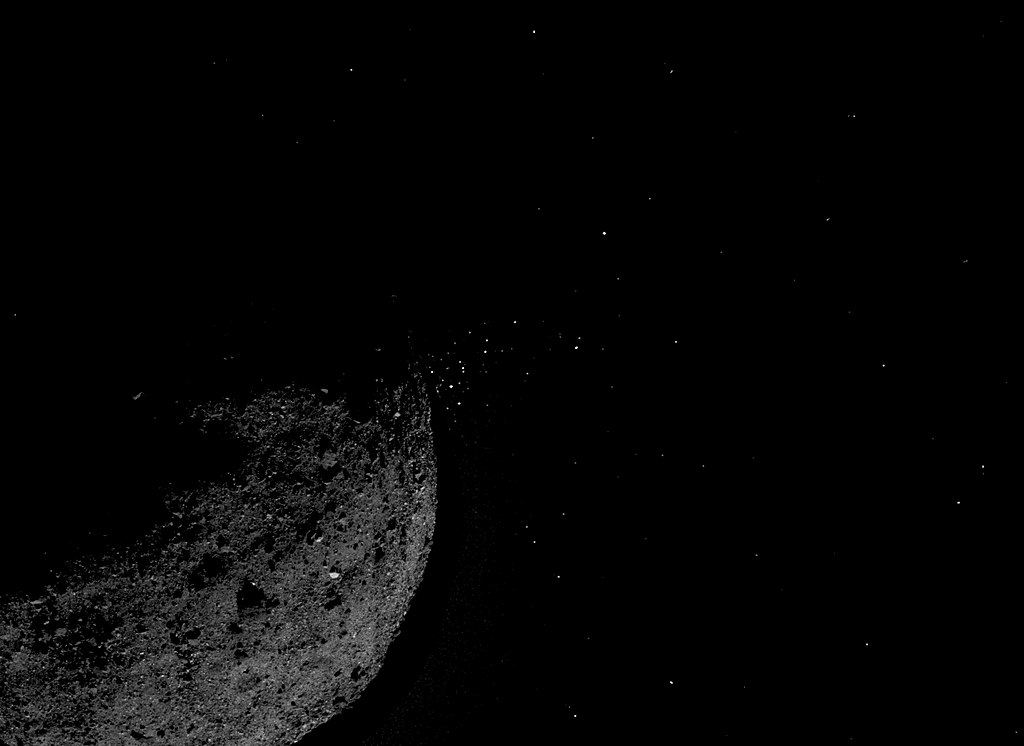After more than two years in orbit around asteroid Bennu, NASA's OSIRIS-REx spacecraft is ready to come home. It's bringing with it a pristine sample of space rocks that geologists here on Earth are eager to study up close. The sample will arrive in September 2023, but we won't have to wait nearly that long for new data from OSIRIS-REx. Last week, the probe carried out one final flyby of Bennu, in an effort to photograph the sample collection site. The photographs are being downlinked now, and should be here by midweek.
If you've been following the OSIRIS-REx mission, you probably already know why scientists are keen to see these photographs, but if you haven't, hold on to your hats - it's a wild story.
The first big shock of the mission came back in December 2018 when the spacecraft arrived at the asteroid. The team expected Bennu's surface to be smooth and sandy, but the first images from OSIRIS-REx revealed a rugged boulder-field, littered with large rocks and loose gravel.
The team also expected the asteroid to be geologically quiet, but just six days after arriving in orbit, they were astounded to observe the asteroid ejecting bits of rock from the surface out into space. These days, the leading theories regarding the source of the ejections are 1. that they might be caused by small meteoroid impacts, or 2. they might be caused by thermal fracturing: as Bennu rotates, the Sun repeatedly heats and cools the rocks, causing cracks and bursts which allow small particles to escape the asteroid's weak gravity.
Bennu's unexpectedly rough terrain, along with its surprise ejections, made it difficult to narrow down a safe location to land and take a sample. The team originally hoped for a 25-meter-wide obstruction-free zone in which to perform the Touch-and-Go (TAG) sample maneuver, but the largest flat open areas OSIRIS-REx could find on Bennu were only 10 meters across. Aided by citizen scientists who scoured imagery of the asteroid for safe landing targets, the team eventually chose a region dubbed 'Nightingale' as the TAG site.
Touchdown occurred on 20 October 2020, and OSIRIS-REx picked up so much material that the capture mechanism was stuck open. The team quickly stowed the capsule before too much material was lost, foregoing a planned spin maneuver that would have measured the weight of the sample.
But here's the craziest part. During the TAG maneuver, OSIRIS-REx's collection arm plunged 48.8 centimeters deep into Bennu, and would likely have gone meters (yes, meters!) deeper had its thrusters not reversed the forward motion. In other words, touching down on Bennu was more like jumping into a ball-pit than like landing on solid ground.
OSIRIS-REx's TAG maneuver on 20 October 2020. Credit: NASA/Goddard/University of Arizona.Loading tweet...
— View on Twitter
Bennu's extremely low density – 60% of the asteroid could be empty space – has significant implications for planetary defence. If Bennu were barreling towards Earth (it's not), the techniques needed to deflect it might differ significantly from techniques used to deflect an asteroid made of a single chunk of rock. Luckily, astronomers are pretty sure no major asteroids of either kind are headed for Earth in the next century or so, so the world's space programs have some time to test various ideas.
The photos being downlinked this week are important because they will show how the TAG maneuver changed Bennu's surface in the Nightingale region. "By surveying the distribution of the excavated material around the TAG site, we will learn more about the nature of the surface and subsurface materials along with the mechanical properties of the asteroid," said Dr. Dante Lauretta, OSIRIS-REx's principal investigator. The new photos should arrive on April 13th.
A few weeks from now, on May 10th, OSIRIS-REx will fire its thrusters towards Earth, leaving Bennu behind for good. Scientists are excited to compare its sample of Bennu to the sample of asteroid Ryugu that the Japanese space program (JAXA) collected last December.
That may not be the end of the mission, either. The sample capsule will re-enter Earth's atmosphere, but the rest of the probe will stay in space, and could head out to rendezvous with another asteroid later in the decade. The OSIRIS-REx mission has been full of surprises so far, and there may be a few more surprises still to come.
Read more: Rani Gran, " NASA’s OSIRIS-REx Completes Final Tour of Asteroid Bennu. " NASA.
Featured image credit: NASA/Goddard.
 Universe Today
Universe Today

